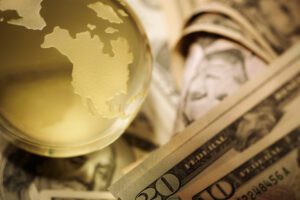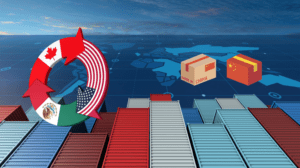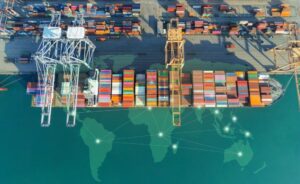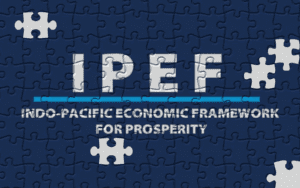Realism, Idealism, and U.S. Trade Policy
|
On April 17, WITA will host a webinar titled “Biden 2.0 | Trump 2.0 – What to Expect in a Second Term” Information can be found here and below. For nearly 100 years, U.S. trade policy has been judged by where it is situated along a continuum from protectionism to free trade. With the Reciprocal Trade Agreements Act of 1934, President Franklin Roosevelt moved the country decisively away from the protectionism of the infamous Smoot-Hawley tariffs of just four years earlier. That shift toward free trade got significant boosts after World War II with the U.S. entry into the General Agreement on Tariffs and Trade in 1948 and the Kennedy administration’s Trade Expansion Act of 1962. After the 1960s, U.S. policy became more nuanced, with liberalization efforts balanced by new, coercive tools (like Section 301 of the Trade Act of 1974) enabling successive administrations to use tariffs and other means to respond to unfair trading practices abroad. In retrospect, the 1994 North American Free Trade Agreement (NAFTA) and the establishment of the World Trade Organization (WTO) the following year may be the high point of the U.S. strategy based on free trade. While the George W. Bush administration was able to achieve free trade agreements with several small and medium-sized economies, two mega-deals pushed by the Bush and Obama administrations—the Trans-Pacific Partnership and the Transatlantic Trade and Investment Partnership—never made it past the finish line. Then came Donald Trump, who repudiated the post-war belief in the value of free trade by imposing punitive tariffs on both rivals like China and like-minded partners like the European Union, blocking new appointments to the appellate body of the WTO’s dispute settlement system, and nearly pulling out of the U.S.-Korea Free Trade Agreement. But with the arrival of the Biden administration—which doesn’t fit neatly into the protectionism-free trade continuum—an additional lens is now needed to assess the state of U.S. trade policy. Given the major transformations underway in the global economy, a framework borrowed from international relations would help. In parallel to protectionism-free trade, U.S. trade policy should also be considered along a continuum of realism-idealism. |
|
Friend-Shoring: What Biden Wants to Achieve by Trading with Allies Rather than Rivals
The tendency to move production and trade away from countries considered to be political rivals or national security risks and towards allies, so-called “friend-shoring”, is a hot topic among economists. The term popped up during the COVID pandemic, a time of significant disruption to supply chains, and gained further traction when Russia invaded Ukraine.
One of the most high-profile results of a friend-shoring policy is that Canada and Mexico have recently replaced China as America’s largest trading partners by total trade, while Mexico has overtaken China as America’s top importer. This followed the introduction of Donald Trump’s trade strategy, which aimed to reduce US dependence on Chinese goods – partly for political reasons and partly because of Trump’s perception of China as a rival power.
Joe Biden has also placed restrictions on trade with China in an attempt to strengthen US competitiveness with China and grow the US tech industry.
The US raised tariffs on imports from China significantly during the Trump administration. These levels remain high, making the costs of importing goods from China to the US more expensive.
In addition, the International Labor Organization Global Wage Report 2022-23 shows that China has experienced the highest rate of real wage growth among all G20 countries over the period 2008-22, also pushing up the price of Chinese goods.
The Biden administration continues to champion friend-shoring, which has further encouraged companies to shift production from China to Mexico as they weigh up geopolitical risks against differences in the costs of production.
|
The Export-Led Model is Evolving, Not Dying
While the rise in anti-globalisation sentiment may have preceded COVID-19, the pandemic reinforced it, leading to an increase in protectionism in East Asia and around the world. Many pandemic-era barriers to labour mobility have been slow to come down and, in some countries, have not been completely reversed.
Industrial policy has enjoyed a major return to popularity in the United States, with the introduction of the Inflation Reduction Act and the CHIPS and Science Act in August 2022, driven by the need to expedite the clean energy transition and mitigate geostrategic concerns by reducing dependence on China.
The subsidies linked to domestic content requirements in these statutes have shifted sourcing patterns, while restrictions on the exports of advanced microchips to Chinese firms have directly affected trade. The World Bank’s October 2023 East Asia Update measures how these laws have reduced Chinese and ASEAN exports to the United States and increased those from Mexico and Canada.
The direct impact of US industrial policy extends beyond its borders by providing preferential treatment to FTA partners and discriminating against others. It may also have spillover effects by contributing to an already growing appetite for similar policies in East Asia and around the world, particularly Europe. This tit-for-tat policy game could apply to subsidies and other instruments of protection as countries try to compete on an increasingly uneven playing field.
To some, these developments signal the end of the export-led model in spearheading growth. While trade growth in East Asia averaged over 8 per cent in the years leading up to the 2008 Global Financial Crisis, it is expected to fall to 4.4 per cent in the post-pandemic years.
While diversifying trade patterns will increase the resilience of trade flows and the sustainability of the export-led model, the two-decade steady decline in the region’s trade growth rate is a cause for concern. Supply chains are shortening and some policy-induced reshoring has taken place. But the slowdown has mainly affected goods rather than services trade. There is huge potential for growth in services trade, especially intermediate services, with digitalisation further reducing barriers.
This has led some commentators to assert that globalisation is not dead but simply transforming. Similarly, if the export-led model of old is dead or dying, then it may be superseded by one in which the composition and the pattern of trade changes, but not its role or importance. The composition will shift away from goods towards services while the pattern of trade will be determined less by efficiency and more by geopolitical factors.
|
IPEF — Two Steps Forward, But One Important Step Still Missing
Jane Mellsop is the Director of Trade, Investment, and Economic Security at the Asia Society Policy Institute in Washington, D.C. The following is an excerpt from her most recent article.
The fourteen members of the Indo-Pacific Economic Framework for Prosperity (IPEF) released the agreement texts for two of the IPEF pillars on 14 March 2024 — the Clean Economy Agreement (CEA) and the Fair Economy Agreement (FEA) — as well as a text establishing the IPEF institutional mechanisms (the IPEF institutional agreement). These agreements represent an important step for the U.S.’ re-engagement in the Indo-Pacific region and illustrate the U.S.’ strength in pulling together outcomes with a broad group of 13 partner countries in a remarkably short time span. Meanwhile, the absence of outcomes on the trade pillar continues to underscore the U.S. political divide on all things trade.
The CEA covers a wide range of initiatives to advance the transition to clean economies, from clean energy technology development to decarbonize industries, through to greenhouse gas capture and energy security. The FEA contains provisions to ensure corruption and bribery activities are criminalized, that enforcement of such is effective, and steps are taken to raise public awareness and promote the role of the private sector. The FEA also promotes the transparency and exchange of tax information among members’ tax authorities in order to improve tax administration and compliance. The IPEF institutional agreement sets up two bodies: the IPEF Council to oversee the operation of all of the IPEF agreements and consider any proposals for new members or new agreements; and the IPEF Joint Commission to consider the implementation of each of the pillar agreements…
The Missing Piece
All of the activity on the Commerce-led pillars highlights the missing piece of IPEF — the USTR-led pillar on trade. The IPEF institutional agreement includes reference to the not-yet-concluded Agreement on Trade and even refers to the Trade Commission that will be set up under that new trade agreement. Unfortunately, prospects for progress on the trade pillar remain slim to none during the U.S. election year. It is a good time for the U.S. to reflect internally on what adjustments could be made to that pillar to make it more acceptable domestically and more attractive internationally.
|
|
|
WITA – We put the community in trade community.Information about upcoming WITA and trade community events TRADE COMMUNITY EVENTS CALENDAR |





